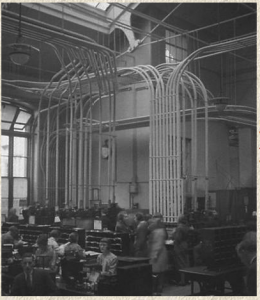Message in a Bottle
Once, because I complained that I’d never received one, my mom sent me a telegram. I was in college at the time and it arrived in a regular envelope in my tiny mail box. While it wasn’t the romantic comunique of my fantasies, at least I could say that I’d received one. What I regret, however, is missing the era of pneumatic messages, which seems like magic now. Underneath European cities in the 19th century a network of interconnecting underground tubes sent sleek, message-filled capsules rocketing around, all powered by compressors that kept the pressure high.
The telegraph machine was invented in the mid-19th century, the telephone, which is discussed in Encyclopedia of the Exquisite‘s entry on the word ‘Hello,’ emerged in the late 1870s. In those years, however, a message sent by pneumatic tube was still a brand-new, viable technology. In Paris, tubes were open to the public for the first time in 1879, and soon the pneumatic network, usually housed in the sewers, was over 467 km in length. You went to a station, wrote out your message and it was sent on to the station nearest its destination, then delivered by a courier the rest of the way. The message was known as a “petit bleu” for the color of the form you filled out. Paris’ the network of tubes was used until 1984.


Comments